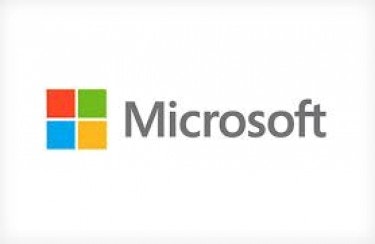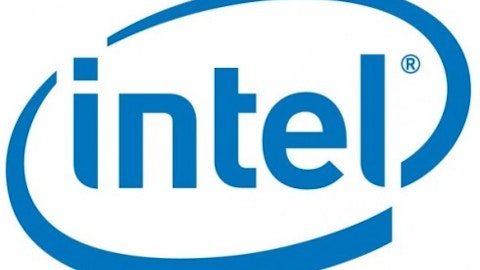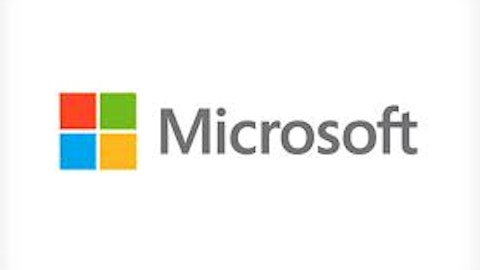I believe that Microsoft Corporation (NASDAQ:MSFT), with its update to Windows 8.1, will be able to win some more users who may be unfamiliar with the new Windows 8 design.
Windows 8.1 will be released later this year. This will give Microsoft Corporation (NASDAQ:MSFT)’s customers the ability to change the desktop background to something similar to Windows 7. The only difference with Windows 8.1 is that it won’t provide a start menu, but it will allow you to put programs on a horizontal toolbar that is reminiscent of the Windows 7 days.
Hoped for outcome
The hoped for the outcome is that the changes brought by Windows 8.1 will help to address the concerns of transitioning from legacy devices running on Windows Vista and Windows 7. Windows Vista users will experience the greatest gains from upgrading their computers, along with Windows XP.
I believe that Microsoft Corporation (NASDAQ:MSFT) is on the right track with this strategy. I believe the greatest advantage afforded through its Windows 8 platform is that it familiarizes the average Windows user with the mobile versions of Windows phone. This could help stimulate demand for Intel Corporation (NASDAQ:INTC) based processors.
Intel is banking heavily on the success of Silvermont, which will have better power efficiency and comes with a 22nm SOC technology process. It is also three times as powerful and power efficient from its current Saltwell generation of processors, which means that the Intel Corporation (NASDAQ:INTC) and Microsoft Corporation (NASDAQ:MSFT) duo could potentially be disruptive. The projected performance of Silvermont should not be laughed at.
That being the case, more must be done in order for Microsoft to win the hearts of its customers. As Microsoft Corporation (NASDAQ:MSFT)’s greatest advantage is through its OEMs, like Dell Inc. (NASDAQ:DELL), it will be able to provide a customize-able tablet that can have varying processors, ram, and memory configurations, which could help bring more customers.
Competition
One of the things that could be potential deterrents to Intel’s success and why Intel Corporation (NASDAQ:INTC)’s success is so dependent on Microsoft is the price wars it will have to run into with QUALCOMM, Inc. (NASDAQ:QCOM) in the mobile arena. According to AllthingsD, the Snapdragon is priced just at $20. This could be troublesome for Intel Corporation (NASDAQ:INTC) as Intel currently prices its Intel Atom Z670 at $75 (the processor does perform extremely well in terms of low power and performance).
Atom Z670 is found in the Acer W510 tablet, which is a Windows 8 tablet. Unfortunately, Atom, while being better than QUALCOMM, Inc. (NASDAQ:QCOM)’s processors across certain benchmarks, doesn’t change the fact that Qualcomm can price its products at a significant discount because it operates at extreme economies of scale.
QUALCOMM, Inc. (NASDAQ:QCOM) provided guidance that it would be shipping about 163 million to 173 million chips. When a company can ship more than 50 million chips per month, it can lower its prices and still recognize significant profit margins.
Other equipment manufacturers love QUALCOMM, Inc. (NASDAQ:QCOM) because of the $20 price tag. This is something that Intel will have to address (which may mean margin erosion), which is what gives Qualcomm enough time to come up with a better chip solution that can again be sold at a lower price than what Intel Corporation (NASDAQ:INTC) can price itself at.
Computer manufacturers can start to buzz again
Source: ComScore
What’s intriguing is that Microsoft Corporation (NASDAQ:MSFT) is starting to gain share in mobile. In partnership with Intel Corporation (NASDAQ:INTC), the tides could start to change. Again, other equipment manufacturers, like Dell, could experiment with creating their own mobile phones. Dell may be able to turn around its declining PC business, which reported a 9% decline in year-over-year sales for computer solutions for consumers. If only Dell was more aggressive with its Tablet strategy.
So, tablets are probably not enough to make a substantiating difference to Dell’s overall earnings performance, but over the longer-term, the Intel, Microsoft duo could bring some serious competition to the Google Inc (NASDAQ:GOOG), QUALCOMM, Inc. (NASDAQ:QCOM), Apple Inc. (NASDAQ:AAPL) ecosystem.
Don’t go all in on Intel yet
But, because Intel has a strong product but weak market performance (we have not seen Intel successfully monetize its Atom processor over the past five years) I wouldn’t jump the gun and buy Intel on Intel’s product performance alone. It seems a little risky as we’re investing on the speculation that Intel could somehow price its chips at a price at which it can compete.
Not to mention Apple Inc. (NASDAQ:AAPL) is not open to accepting different chip designs, and Samsung Electronics Co., Ltd. (KRX:005930) is designing its own chips. The remaining handsets are going with Qualcomm because Snapdragon is awesomely inexpensive. So, if Intel wants to win, it has to hold hands with Microsoft.
Samsung Electronics Co., Ltd. (KRX:005930) is open to trying out an Intel processor in its tablets, which seems weird considering Samsung Electronics Co., Ltd. (KRX:005930) has been developing its own chip design for its mobile platform. The main reason for tapping into Intel technology, albeit more expensive, may be to provide a stronger user-experience and gain back some of the market share Apple is hoarding for itself. After all, it is Apple Inc. (NASDAQ:AAPL) that is dominating in tablets.

Source: IDC
Currently, Apple has 39.6% of the tablet market, which it lost a bit of because it tends to have a higher average selling price than its competitors. Nonetheless, Samsung is coming to town with a strong Intel processor, hoping that Intel’s Silvermont will bring down Apple to its knees. Again, the problem with competing with Apple is that Apple is extremely adept at creating user-experiences. The iPad is extremely fast even with an older dual core processor using ARM technology.
Apple still provides a strong user-experience, and for some reason, I’m not sure how much a user will be able to tell the difference of a few millionth of a second difference in page load screens. At least, we can hope that the Samsung tablet will come packed with better multi-media capabilities. Maybe, Netflix, Inc. (NASDAQ:NFLX) will be streaming 4k on a Samsung tablet one day.
In anticipation of this, maybe Samsung does need the help of Intel, but widespread adoption of 4k screen technologies is going to be three years down the road, meaning that the semiconductor landscape will focus more on cost rather than the power of components.
Conclusion
Microsoft Windows 8 should open the doors for a stronger mobile strategy. This will mean that consumers will be buying more Intel chips on mobile computing devices. The problem Intel faces is in scaling its operations, which is heavily dependent on Microsoft’s success in mobile. We would have to wait to see how all this plays out, but for now, investors should bank more heavily on Apple, Google Inc (NASDAQ:GOOG), and QUALCOMM, Inc. (NASDAQ:QCOM) because they have an established track record.
Alexander Cho has no position in any stocks mentioned. The Motley Fool recommends Intel. The Motley Fool owns shares of Intel, Microsoft, and Qualcomm. Alexander is a member of The Motley Fool Blog Network — entries represent the personal opinion of the blogger and are not formally edited.
The article Intel and Microsoft May Not Be Enough Against Qualcomm originally appeared on Fool.com is written by Alexander Cho.
Copyright © 1995 – 2013 The Motley Fool, LLC. All rights reserved. The Motley Fool has a disclosure policy.




